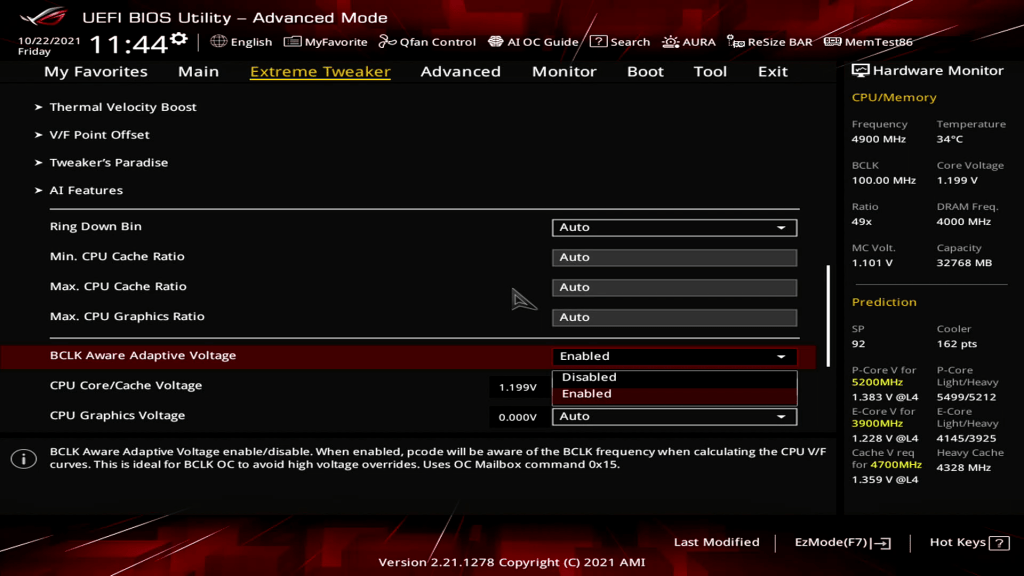Intel BCLK Aware Adaptive Voltage is an option that enables the PCU to adapt the CPU voltage frequency curves to the actual BCLK frequency.

This technology was introduced along with the Kaby Lake processors back in 2016.
To understand its function, you can refer to the Intel Adaptive Voltage Mode explanation. Whereas the Adaptive Voltage is designed to work with only the CPU ratios, when bclk aware adaptive voltage is enabled, the processor scales its voltage calculations for all the V/f power domains and produces a voltage based on frequency as opposed to the multiplier.
The affected V/f power domains include the CPU cores, the Ring, and the integrated graphics (Slice and Unslice). The algorithm tracks BCLK at runtime and modifies voltage even when BCLK is changed at runtime at sub-MHz resolution.
Intel BCLK Aware Adaptive Voltage Example
In Adaptive Voltage mode, the factory-fused voltage-frequency curve of a CPU core maps a voltage against a ratio. For example, 45X may map against 1.175V, and 52X may map against 1.35V. When the CPU boosts to a high frequency, it references the voltage-frequency curve using the configured ratio to know which voltage to apply.
When you overclock the BCLK frequency, the voltage may not be suitable for the resulting frequency.
For example, we increase the BCLK frequency from the default 100 MHz to 125 MHz and have decreased the CPU ratios to match the default specification. Without enabling this option, the CPU would look up the voltage for the 45X ratio, for example, 1.175V, then use this for 5.6 GHz. That would not work out well. By enabling this setting, the CPU takes account of the adjusted base clock frequency, and the CPU will use the appropriate voltage based on the effective frequency instead of the configured ratio.

This feature works for all V/f power domains in the CPU and produces a voltage based on frequency as opposed to the multiplier. The V/f power domains include the CPU cores, the Ring, and the integrated graphics. So it also has a significant impact on our IGP voltage frequency curve.
If we set the BCLK frequency to 125 MHz and disable BCLK Aware Adaptive Voltage, the voltage-frequency curve would look as follows. For example, we see that for 1500 MHz, the voltage would be 0.92V instead of the default 1.005V and thus may be unstable. When we enable BCLK-aware adaptive voltage, the integrated PCU will calculate the correct voltage based on the actual frequency. So, the voltage will be 1.005V again. When using BCLK-aware adaptive voltage, all frequencies below the maximum default frequency will follow the factory-fused voltage frequency curve. For the IGP of the 13900K, that’s up to 1650 MHz.

Intel BCLK Aware Adaptive Voltage in SkatterBencher Guides
We use the technology in the following SkatterBencher guides: